The microbiome’s palate—prebiotics a la carte
By Comet Bio CEO, Rich Troyer
The human microbiome is home to a community of microorganisms numbering in the trillions. It consists of thousands of different species, from parasites and bacteria to viruses and fungi. Each person has a unique microbiome and our understanding of its connection to immunity and overall health and wellness is evolving rapidly.
Many consumers realize that they may not be receiving enough nutritional benefits from food and have turned to supplementation for help.
A recent report from Market Research Engine predicted that the global probiotic market is expected to be around US $78 billion by 2025. However, this isn’t the only growing category within the gut health market. Prebiotics—the nondigestible carbohydrates that the “good” bacteria consume, as defined by the International Scientific Association for Probiotics and Prebiotics—have recently gained traction. An estimate from Global Market Insights said the global prebiotic market will reach $7.2 billion by 2024, a significant increase from 2016, when the market value was $3.4 billion.
Probiotics thrive with prebiotics
Probiotic products contain the good bacteria found in foods such as yogurt, kombucha and sauerkraut. The human gut naturally contains some good bacteria. Taking probiotics can help develop a healthier gut microbiome by out-competing the “bad” bacteria. It’s important to note that the term probiotic is an umbrella word for the thousands of different types of good bacteria strains. These beneficial probiotic strains “eat” prebiotics to optimize their functions within the gut.1
Prebiotics, by definition, are nondigestible carbohydrates found in grains, fruits and nuts that selectively feed strains of good bacteria existing within the gut. And just like a community of individuals, each probiotic strain has a different preference of prebiotics,2 or, a “palate” for prebiotics. For example, the prebiotic arabinoxylan, a dietary fiber found in the cell walls of grains, leaves and hulls, has been clinically shown to support the growth of the probiotic genus known as bifidobacterial, according to an evidentiary summary prepared by Dicentra Life Sciences Consulting.
Bifidobacteria are recognized as probiotics, which are bacteria whose fermentation profiles produce beneficial effects in their human hosts. They exist naturally in the gut and can support a healthy microbiome.3 In addition, this same arabinoxylan plant fiber extract has been shown to support healthy blood glucose levels with as little as about 3 grams per serving, the Dicentra summary found.
As an FDA-recognized dietary fiber with an upcycled origin, arabinoxylan allows companies to not only provide a sustainable product but also allows them to increase their nutritional label claims.
A diverse diet of prebiotics can help to optimize a wide array of probiotics within the gut. The result is a symbiotic relationship that builds a healthy microbiome. This positive working relationship can be established when probiotics are supplemented with a diverse set of prebiotics, and they work together to promote a healthy gut. Again, diversity is key. Consumers must be aware that to date, there is no scientifically validated super prebiotic that optimizes every strain of probiotic in the gut. But by diversifying prebiotic intake and supplementing with one or more probiotics, such as arabinoxylan for bifidobacteria, consumers can establish a healthy microbiome.2
The health and wellness hub
Research suggests the microbiome can reach beyond the digestive tract and positively impact immunity,4 mental health,5 decrease muscle fatigue, improve recovery,6 and even help mitigate chronic diseases such as diabetes.7 The balance of a symbiotic relationship between “pro-” and “pre-” has been shown to promote general health and wellness and a balanced gut.2
Although the science behind some of these health effects is still in its infancy, the importance of the gut microbiome to the digestive tract is evident. A 2017 study led by Paulina Markowiak found that, when implemented correctly, prebiotics maintain gut health and can provide relief of obesity, type 2 diabetes, IBS, atopic dermatitis, and alleviation of lactose intolerance.8
In addition, a study published in BMC Biology stated that the nondigestible carbohydrates (prebiotics), in particular, have enormous potential to modify the gut microbiota. 9 The study supplied two alternative nondigestible carbohydrates to three different human gut model microbiomes with consistent dosages. The trial found that two strains of bacteria were optimized by different types of prebiotics.
These studies, along with many others, help demonstrate that the symbiotic relationship supports gut health starting at the species level. It stands to reason that in order to support and feed the thousands of microbiota strains within the gut, people should strive to consume various types of prebiotics for optimal gut health. So, when thinking prebiotics, think a la carte.
References
1 Jandhyala SM et al. “Role of the normal gut microbiota.” World J Gastroenterol. 2015;21(29):8787-8803.
2 Holscher HD. “Dietary fiber and prebiotics and the gastrointestinal microbiota.” Gut Microbes. 2017;2:172-184.
3 O’Callaghan A, Van Sinderen D. “Bifidobacteria and Their Role as Members of the Human Gut Microbiota.” Front Microbiol. 2016;7:925.
4 Kaczmarczyk MM et al. “The health benefits of dietary fiber: beyond the usual suspects of type 2 diabetes, cardiovascular disease and colon cancer.” Metabolism. 2012;61(8):1058-1066.
5 Flowers SA et al. “The Gut Microbiome in Bipolar Disorder and Pharmacotherapy Management.” Neuropsychobiology. 2020;79(1):43-49.
6 Grubic TJ et al. “Comparison of ingesting a food bar containing whey protein and isomalto-oligosaccharides to carbohydrate on performance and recovery from an acute bout of resistance-exercise and sprint conditioning: an open label, randomized, counterbalanced, crossover pilot study.” J Int Soc Sports Nutr. 2019;16:34.
7 Delzenne NM, Neyrin14:3ck AM, Cani PD. “Modulation of the gut microbiota by nutrients with prebiotic properties: consequences for host health in the context of obesity and metabolic syndrome.” Microb Cell Fact. 2011; 10(Supp. 1):S10.
8 Markowiak P, Śliżewska K. “Effects of Probiotics, Prebiotics, and Synbiotics on Human Health.” Nutrients. 2017;9(9):1021.
9 Chung WS et al. “Modulation of the human gut microbiota by dietary fibres occurs at the species level.” BMC Biol. 2016;14:3.






